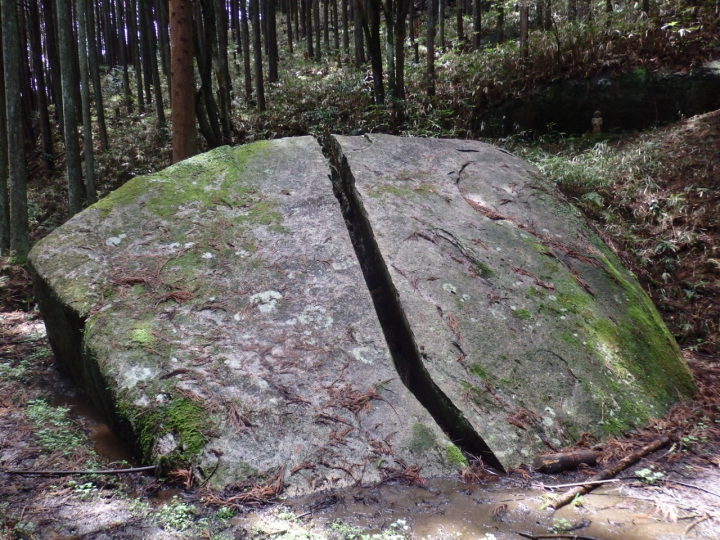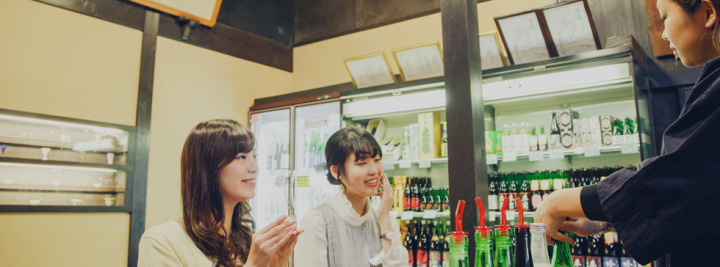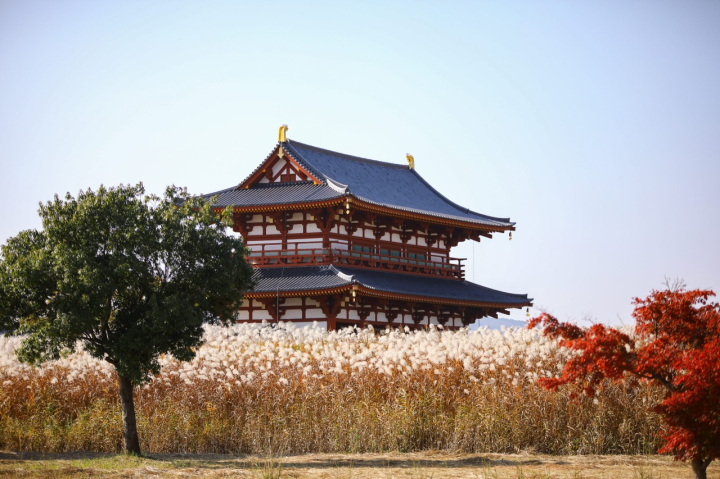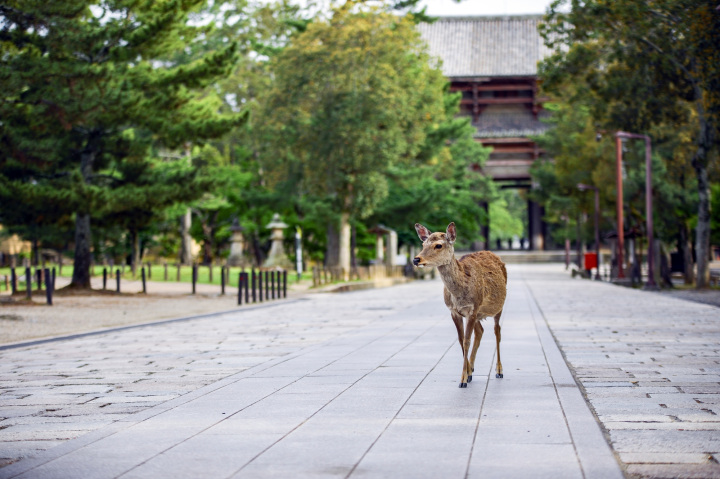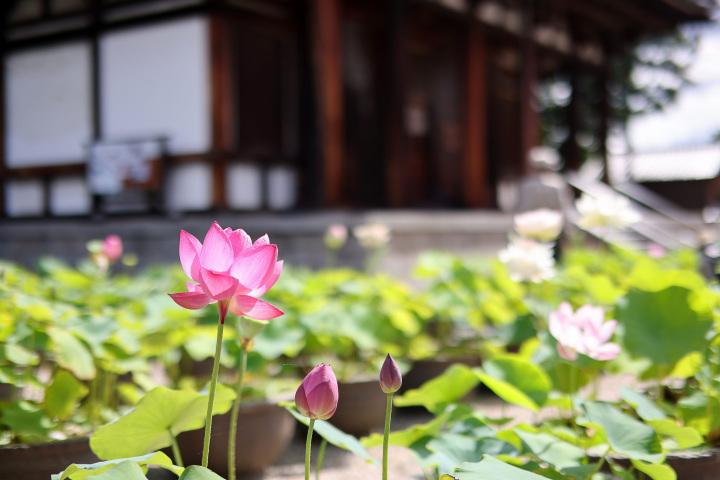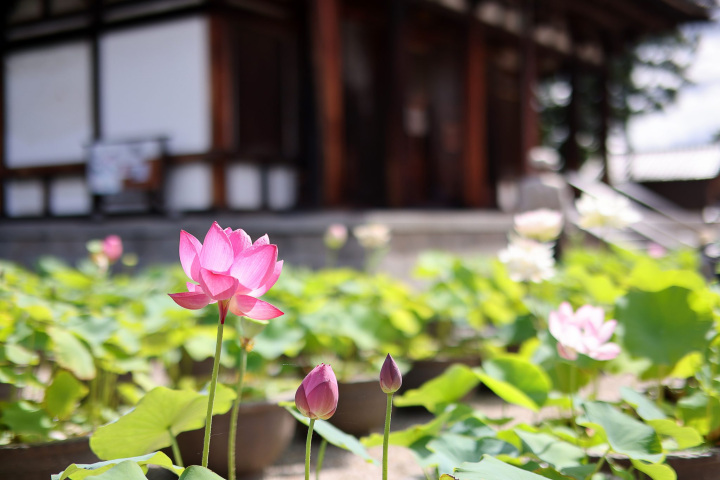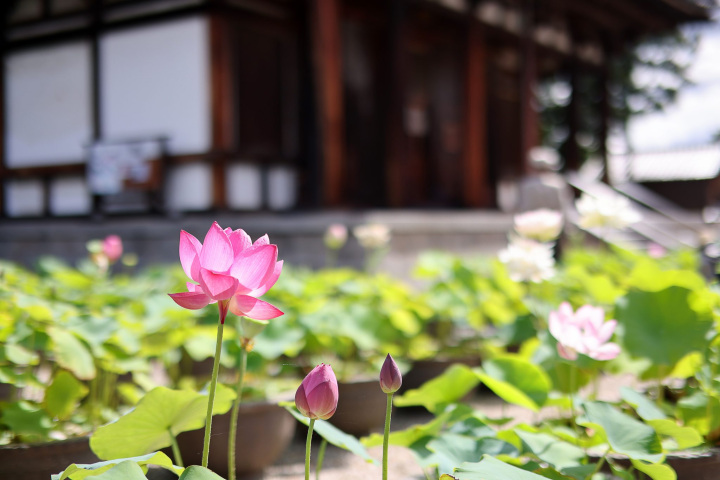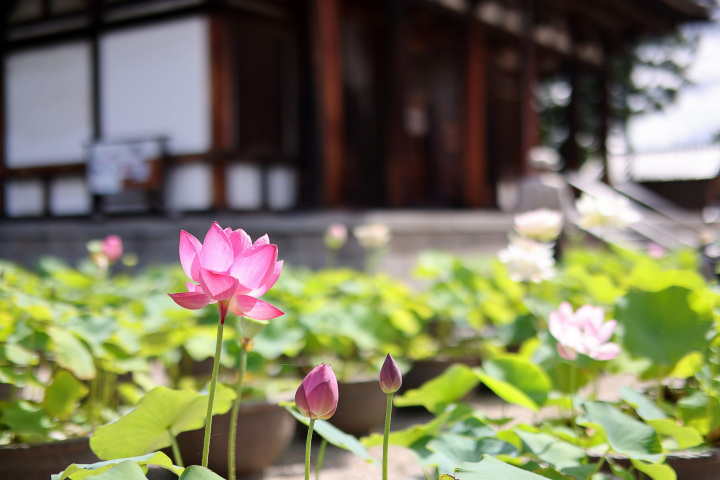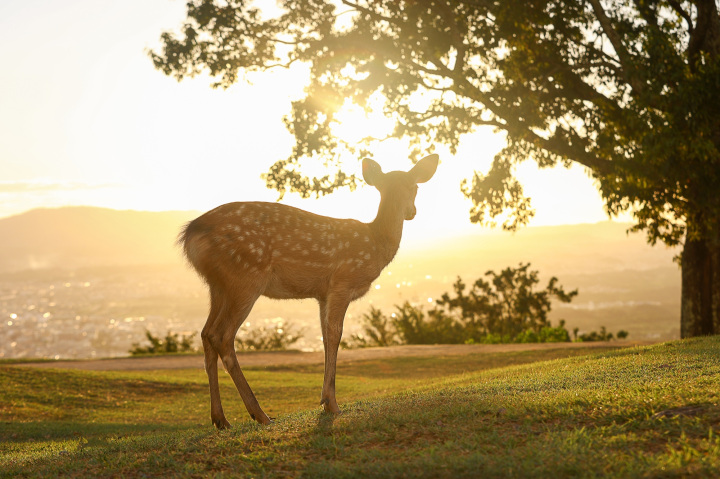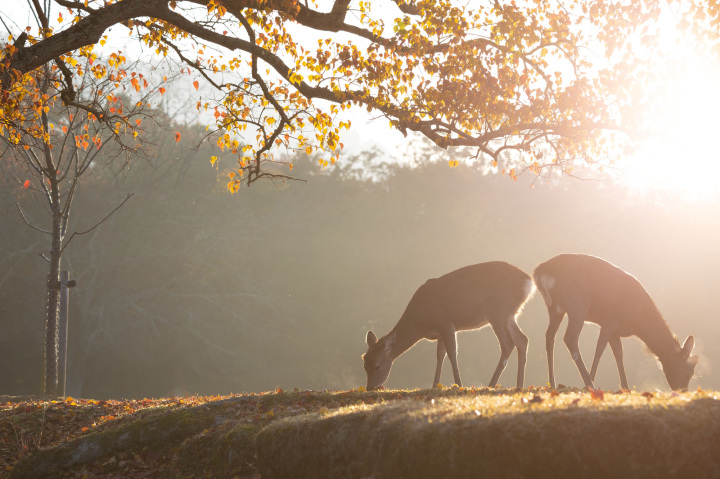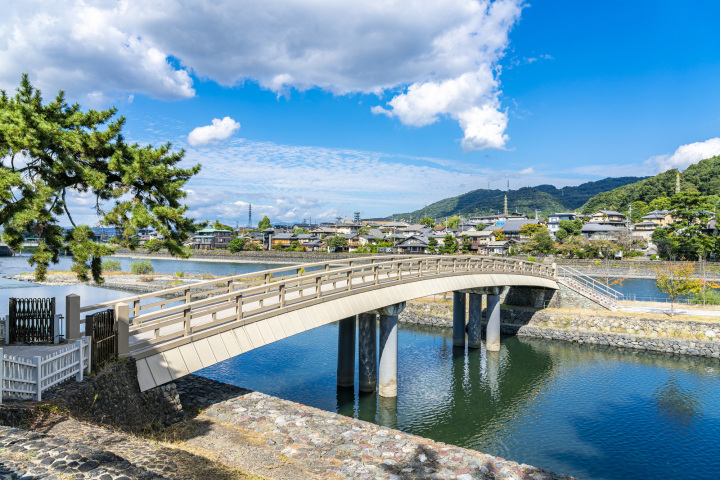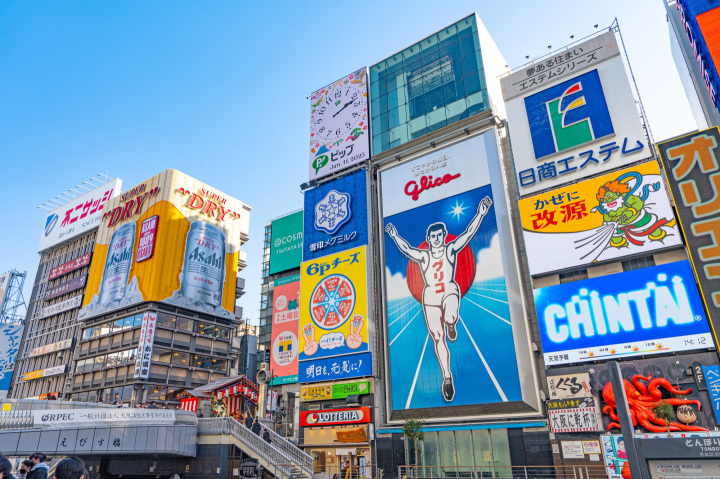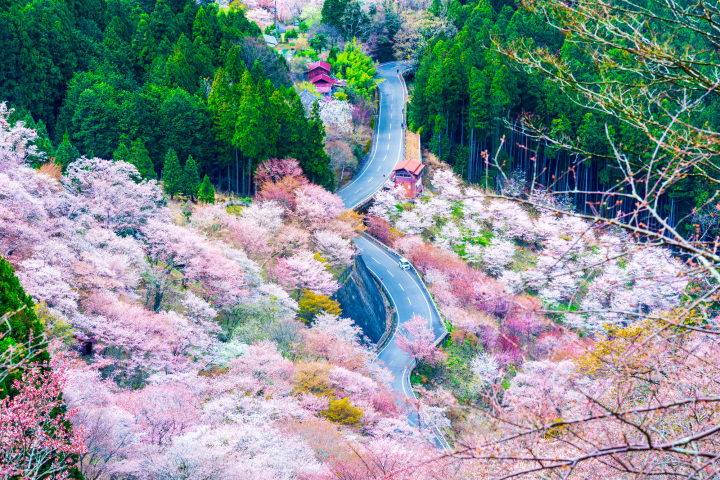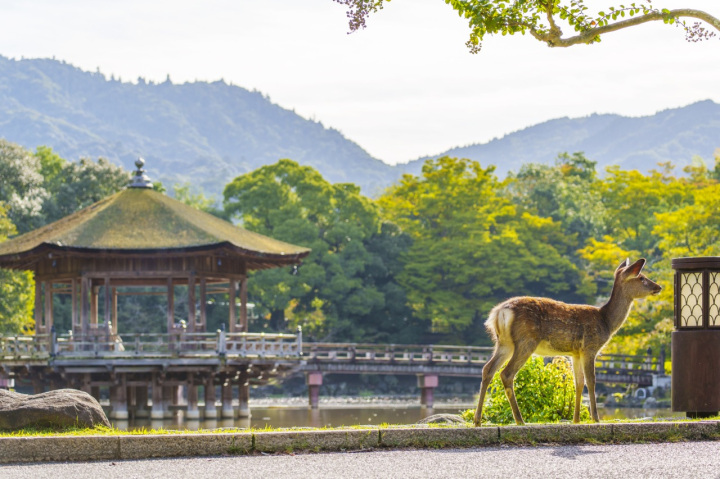Drive from Osaka! Itinerary for 2 days and 1 night to visit the ume (plum) grove in Tsukigase, Nara
Tsukigase is one of the best plum blossom viewing spots in Kansai, of which Nara is proud. Why not make your spring trip to Nara enjoyable and delicious by viewing ume blossoms during the day and toasting with ume sake at night? In this itinerary, we will introduce some spots you may want to visit on your drive to Tsukigase, including “Hari T.R.S.,” a roadside station!
- Days required
- 1 night and 2 days
- Main methods of transportation
- Car
Itinerary features
- Tsukigase Plum Creek Tenjin Plum Grove
- Ume no Sato Tsukigase Onsen
- Lakeside Village Tsukigase,Ryuohnotaki Falls
- Hari Tea Time Resort Station (Hari T・R・S)
- Nara Okuyama Driveway - Toll road leading to the summit of Mt. Wakakusa
- Mount Wakakusa
- Kitamachi
- Hannyaji temple
- Hokkeji
- Nara Palace Site Historical Park
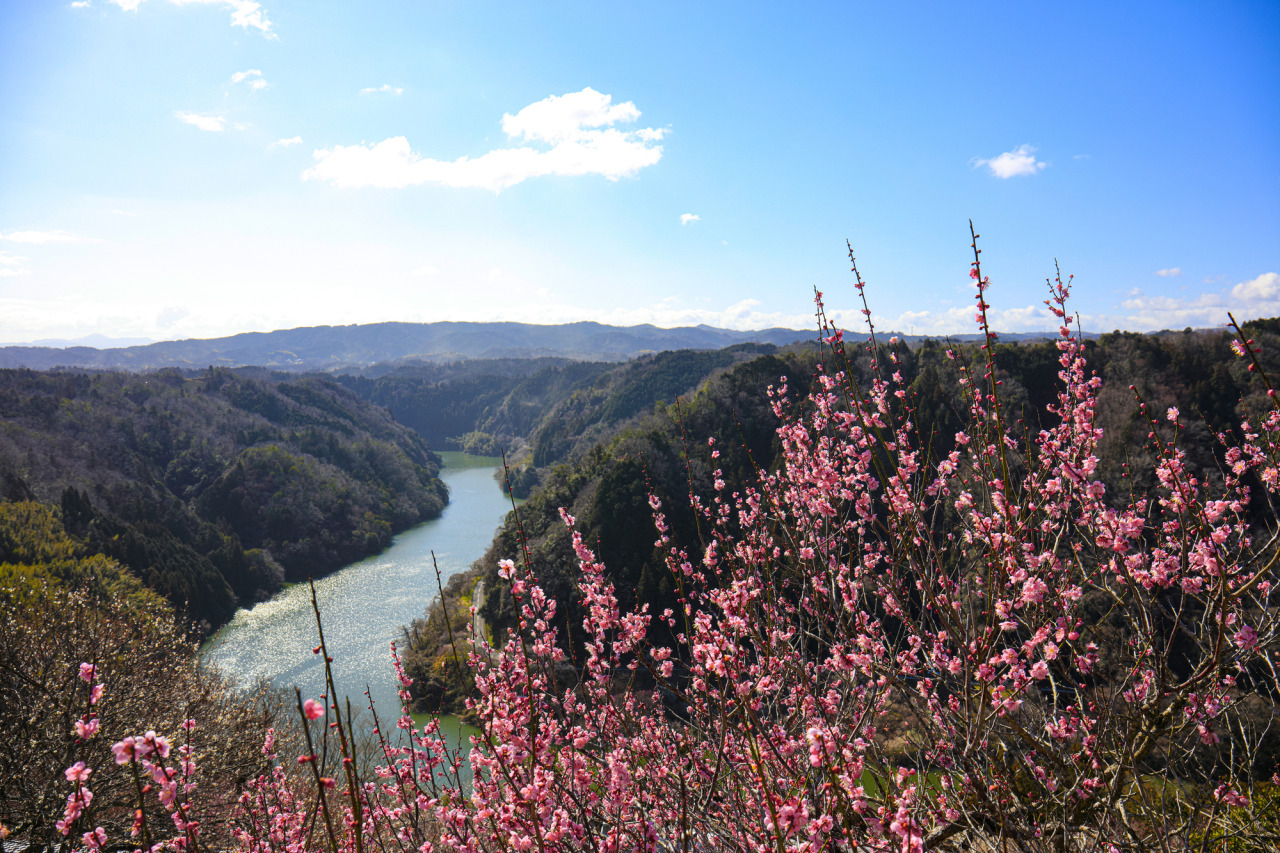
Tsukigase Plum Creek Tenjin Plum Grove
One of Japan's premier destinations for plum blossoms with 10,000 vibrant red and white plum trees
![[ Undefined: coursed-title-plain ]](/lsc/upfile/spot/0001/0109/10109_2_l.jpg)
Tsukigase, located in the eastern part of Nara City, is one of Japan's premier destinations for plum blossoms. Approximately 10,000 vibrant red and white plum trees line the Satsuki River valley, referred to as "Tsukigase Plum Grove" (Tsukigase Plum Valley). The Ume Matsuri (Plum Festival) is held annually in February and March. During this period, various events take place at different locations, including the Tsukigase Ume Museum, where food stalls and teahouses serve treats such as plum ice cream and udon with pickled plums. It takes about one hour by car from central Nara to Tsukigase, while taking the bus requires approximately 1 hour to 1 hour and 50 minutes from JR/Kintetsu Nara Station.
- Address
- Nara CityTsukigaseoyama
Ume no Sato Tsukigase Onsen
There's nothing like a hotspring after a day of touring.
![[ Undefined: coursed-title-plain ]](/lsc/upfile/spot/0001/0119/10119_1_l.jpg)
Ume no Sato Tsukigase Onsen opened in Tsukigase in 1998 as a public relaxation facility. In addition to effectively treating neuralgia, joint pain, frozen shoulder, chronic digestive disorders, and poor circulation, the inviting hot spring facilities will rejuvenate your mind and body. The indoor baths are filled with abundant natural light, and various other features enhance the hot spring experience, allowing visitors to fully enjoy the hot springs by soaking in each bath. After your soak, you can also savor a meal. The refreshment corner is equipped with the latest massage chairs and health management equipment.
- Address
- Nara City2681 Tsukigase Oyama
- Times
- 10:30~20:30(Last entry 20:00)
- Closed
- - Tuesdays from April to January
*Open if Tuesday is a national holiday (no substitute closure)
- December 30, December 31, January 1
*Open daily in February and March
Lakeside Village Tsukigase,Ryuohnotaki Falls
![[ Undefined: coursed-title-plain ]](/lsc/upfile/courseDetail/0000/0148/148_1_l.jpg)
Lakeside Village Tsukigase is a facility based on the concept of “enjoying Tsukigase's food. The facility has a direct sales shop, offering locally grown vegetables, fruits, and specialties, making it the perfect spot to obtain foods nurtured by the nature of Tsukigase. There is also a wide lineup of processed products using ume (Japanese apricot), making them perfect for souvenirs. Lake Tsukigase spreads out before you, and the contrast between the lake's surface and the cherry blossoms is spectacular, especially in spring. Also, a 5-minute walk away is “Ryuohnotaki Falls,” where a white dragon is said to have appeared, so it is recommended to park your car in the parking lot and enjoy a short stroll.
[Image: Tsukigase Bridge].
Hari Tea Time Resort Station (Hari T・R・S)
A rest area at the Hari Interchange where the Meihan National Highway meets National Route 369.
![[ Undefined: coursed-title-plain ]](/lsc/upfile/courseDetail/0000/0150/150_1_l.jpg)
One of the largest roadside stations in western Japan features a spacious parking area, restaurants, a convenience store, a direct sales market for local agricultural products, a motorcycle gear shop, and a natural hot spring facility. The restaurant area offers a wide variety of dining options, including ramen, udon, soba, rice bowls, yakiniku, and various set meals. Additionally, there are direct sales shops and souvenir stores where visitors can shop for local agricultural products, fresh foods, processed goods, and specialty items.
- Address
- Nara City345, Hari-cho
- Times
- North Lily Food Court
Weekdays: 9:00 AM - 6:00 PM
Saturdays, Sundays, and holidays: 9:00 AM - 7:00 PM
*Other hours may vary by store
Tsuge no Hata Takaharaya (Farm Products Store)
Weekdays: 10:00 AM - 5:00 PM
Saturdays, Sundays, and holidays: 9:00 AM - 5:00 PM
Hari Onsen Land (Hot Springs)
Weekdays: 10:00 AM - 11:00 PM
Saturdays, Sundays, and holidays: 7:00 AM - 11:00 PM
(Reception closes 30 minutes before closing)
Closed on Wednesdays
Nara Okuyama Driveway - Toll road leading to the summit of Mt. Wakakusa
Driving through the Kasugayama Primeval Forest offers stunning views of the changing seasons.
![[ Undefined: coursed-title-plain ]](/lsc/upfile/spot/0001/0115/10115_1_l.jpg)
The Nara Okuyama Driveway is a 12-kilometer toll road located in the eastern part of Nara City, connecting Mt. Wakakusa, Mt. Kasuga, and Mt. Takamado. It traverses areas rich in nature, including the Kasugayama Primeval Forest, and provides views of the changing seasons.
Main Features: Three Courses
New Wakakusayama Course: A route that travels to and from the summit of Mt. Wakakusa, offering spectacular views of the Nara Basin. The sunset and night views from the summit of Mt. Wakakusa are counted among the "New Three Great Night Views of Japan" and are particularly popular.
Nara Okuyama Course: A trail that winds through the World Heritage Site "Kasugayama Primeval Forest" and leads down to Mt. Takamado.
Mt. Takamado Course: A path that circles Mt. Takamado, mentioned in the Manyoshu, and features historical sites like stone Buddha statues.
- Address
- Nara CityZoushi-cho - Byakugoji-cho
- Times
- Shin-Wakakusayama Course: 8:00-23:00 (until 22:00 in winter)
Nara Okuyama Course: 9:00-17:00
Takamadoyama Course: 8:00-18:30
Mount Wakakusa
Visitors can enjoy a breathtaking view of the incredible sunsets and night skies from a 342-meter-high mountain.
![[ Undefined: coursed-title-plain ]](/lsc/upfile/spot/0001/0108/10108_1_l.jpg)
Mount Wakakusa is a triple-layered mountain covered in grass. From its 342-meter-high summit, visitors can enjoy a typical view of Nara, which includes Todaiji Temple, Nara Park, Nara City, and Mt. Ikoma. Sunsets and night views, recognized as one of Japan's three most beautiful nightscapes, are also worth experiencing. The summit is accessible by a toll road for cars or on foot.
In recent years, many tourists have been watching the sunset from the base of Mount Wakakusa, which is within walking distance of Todaiji Temple and Kasuga Taishashrine. One of the most famous events is the annual "Yamayaki," during which vast brushwood on the mountainside is set on fire. The spectacular sight of the fire blazing into the night sky truly deserves the title of a festival of fire.
- Address
- Nara City469 Zoshi-cho
- Times
- 9:00 a.m. - 5:00 p.m. (Excluding special mountain access periods)
Kitamachi
![[ Undefined: coursed-title-plain ]](/lsc/upfile/courseDetail/0000/0157/157_1_l.jpg)
Kitamachi is one of the most sophisticated areas in Nara City, with cafes, general merchandise stores, and ateliers lining a quiet residential street.After gathering information at the tourist information center, which is a renovated police box from the Meiji period(1868-1912), find your favorite restaurant and enjoy lunch. Many of the stores in this area are privately owned, and you may be able to find unique items that you can only find here.
Image: Kitamachi Nabeya Tourist Information Center
Hannyaji temple
The ancient temple guards the northeast, which is considered unlucky for Heijo-kyo Capital, and is renowned for its vibrant flowers.
![[ Undefined: coursed-title-plain ]](/lsc/upfile/spot/0001/0017/10017_5_l.jpg)
According to the legend of Hannyaji Temple, it was founded in 629 by a Goguryeo monk named Ekan, who constructed a temple on this site. Later, during the era of Emperor Shomu in 735, it is said that additional temple buildings were built to protect Heijo-kyo's "demon gate" (an unlucky quarter).
Today, the temple features the Roumon gate (a National Treasure), which showcases an elegant architectural style from the Kamakura period (1185-1333).
The temple is also famous for its flowers, particularly the hydrangea in early summer and the cosmos, which bloom from early summer through autumn.
- Address
- Nara City221 Hannyaji-cho
- Times
- Visiting hours: 9:00 AM - 5:00 PM (last admission at 4:30 PM)
Reduced visiting hours: 9:00 AM - 4:00 PM (last admission at 3:30 PM)
Reduced visiting period: January, February, March, April, July, August, December
Hokkeji
Empress Komyo designated Hokkeji as the head of a national system of convents.
![[ Undefined: coursed-title-plain ]](/lsc/upfile/courseDetail/0000/0161/161_1_l.jpg)
Empress Komyo, a key figure in the spread of Buddhism in Japan, established the Hokkeji Imperial Convent in 745 and designated Hokkeji as the head of a national system of convents. Hokkeji can be roughly translated as the Temple of the Flower of the Law. Empress Komyo encouraged women in the convent to practice flower arrangement, and the Hokkeji Goryu school of ikebana continues today.
The Empress was a deeply devout woman who devoted herself to caring for the less fortunate. She established an infirmary and a residence for orphans and the disabled. In the Karafuro bathhouse, which was rebuilt in 1766 and still stands on the temple grounds today, she washed the dirt off a thousand people afflicted with illness.
- Address
- Nara City882 Hokkeji-cho
- Times
- 9:00~16:30(Last entry 16:00)
Nara Palace Site Historical Park
The ruins of Heijo Palace, the heart of the Heijo-kyo capital.
![[ Undefined: coursed-title-plain ]](/lsc/upfile/spot/0001/0041/10041_2_l.jpg)
The vast field stretching from Kintetsu Saidaiji Station to Shin-Omiya Station is the Heijo Palace Site (World Heritage). Located at the northernmost end of the vast capital of Heijokyo, with a total area of about 120 hectares, it was home to the Imperial Palace and government district. At the time, the government consisted of eight ministries and 100 agencies. The area is said to have been surrounded by earthworks and moats and had 12 gates, three in each direction.
The Nara National Research Institute for Cultural Properties has conducted excavation surveys since 1959. Buildings and ruins such as the Daigokuden and Chodoin, where official ceremonies were held, the Toin Garden, where aristocrats held banquets and ceremonies, the Dairi, where the emperor lived, and the main gate, Suzakumon, have been restored. The entire area has been open to the public since 1998. At Heijokyo Izanaikan Museum, you will discover how the capital was built and how people lived there.
- Address
- Nara CitySaki-cho
- Times
- Opening hours and closing days differ by facility.
For detailed information, please visit the Heijo Palace Site Historical Park official website. - Closed
- Closed days differ by facility.
